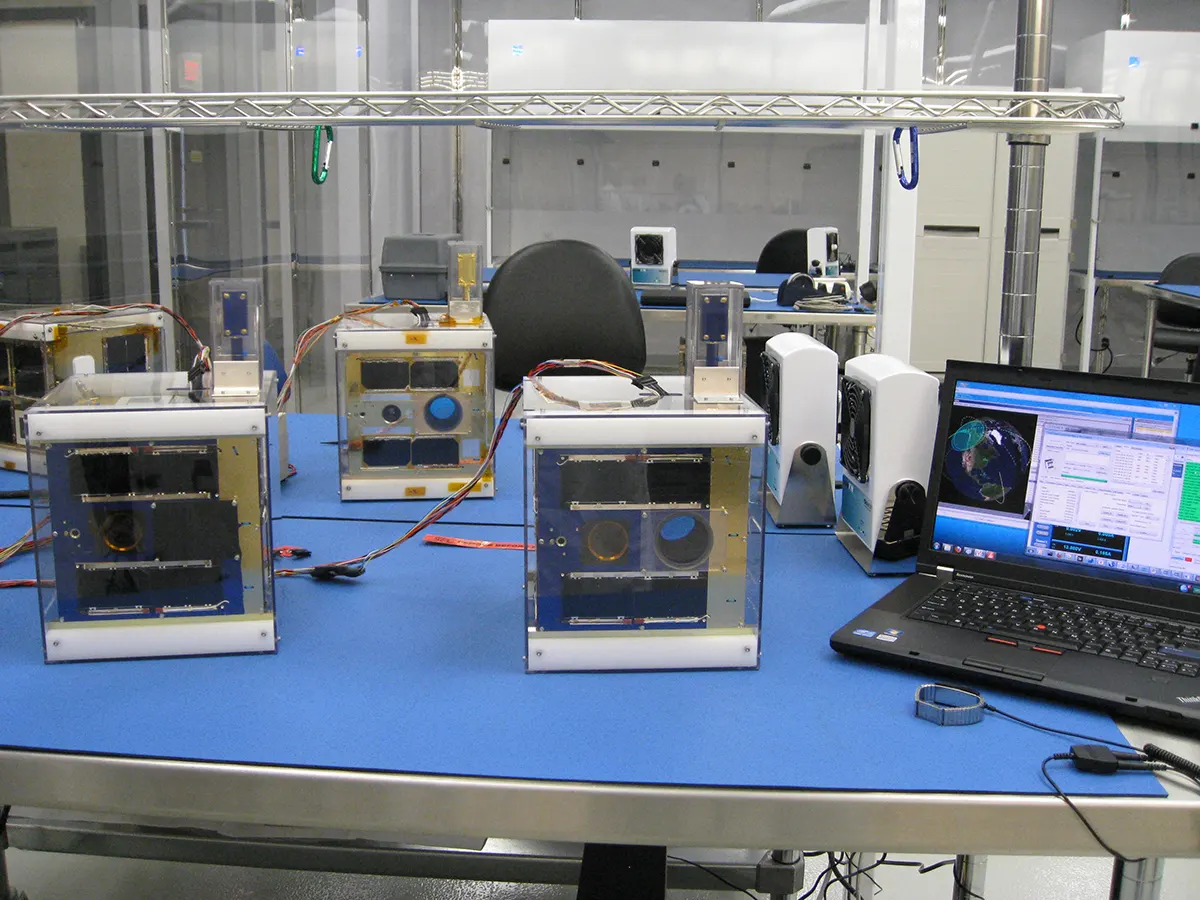Celebrating the Scientific Successes of the BRITE Space Astronomy Constellation
In the first part of this blog, we discussed our development of the BRIght Target Explorer (BRITE) mission, a constellation of five 7-kg nanosatellites developed by SFL that provide extraordinary insights into luminous variable stars during a decade in operation. Funded by research organizations in Canada, Austria, and Poland, BRITE relied on precise space attitude control to observe distant stars over long periods. In this blog, we discuss some of the remarkable astronomical achievements of the BRITE nanosatellites that operated well past their two-year design lives.

The BRITE program has delivered valuable scientific data to the BRITE Executive Science Team (BEST) of researchers and the global astronomy community. As noted, the overall objective of BRITE and other space telescopes was to perform astronomical observations that aren’t possible from terrestrial instruments. The BRITE goal was to monitor our galaxy’s brightest variable stars, which means their brightness changes over time.
Prof. Catherine Lovekin, BRITE Executive Science Team (BEST) Chair and Associate Professor of Physics at Mount Allison University in New Brunswick, Canada, explained these variations can occur for several reasons. Some are binary stars that revolve around each other, temporarily occluding brightness as the other passes in front. A similar variable effect may happen if an orbiting planet transits the star. Other variable stars, however, have intrinsic physical dynamics in their interiors that cause the changes.
“Those intrinsic ones were the main targets of BRITE,” said Lovekin. “[Although] we were interested in some of the binaries.”
The key to studying variable stars is observing them continuously for at least days at a time, which is not possible with terrestrial telescopes that are constantly interrupted by daylight and weather conditions. For BRITE, the value of analyzing stars for days (weeks, months) was compounded by the ability to observe them repeatedly over a period of 10 years, thanks to the constellation’s longevity.
The overall results are staggering: “We observed about 720 stars, about a quarter of which had a type of variability not previously detected,” said Lovekin.
Notable BRITE scientific achievements include the following:
- Better understanding of solar winds – Massive stars lose enormous mass and generate dense solar winds in the process, which also contributes to brightness variations. BRITE probed the circumstellar environments of such stars to study how the loss of mass occurs.
- Study of planet formation – BRITE observed a young star system called Beta Pictoris which is surrounded by a protoplanetary disk where planets are believed to be forming. Observations over 10 years tracked the planet-formation process around the star.
- Discovery of a magnetic pulsating star – Delta Scuti is the name given to a certain class of variable star known for their unique pulsating characteristics. BRITE discovered what is believed to be the first Delta Scuti with a magnetic field, an observation that significantly changed understanding of these stars.
One of BRITE’s most interesting discoveries didn’t involve a variable star and occurred by accident, Lovekin explained. A white dwarf was seen in the BRITE field of view just as the star began to nova. Over a period of weeks, BEST researchers and other astronomers notified by them, watched as the nova progressed through its entire nova cycle, a spectacle never witnessed previously by astronomers.
SFL congratulates all BEST researchers around the world for their support of the barrier-breaking BRITE nanosatellite mission. Key researchers include the following:
Dietrich Baade – European Southern Observatory, Garching, Germany
Paul Beck Graz – University of Graz, Austria
Dominic Bowman – Katholieke Universiteit Lueven, Belgium
Jadwiga Daszyńska-Daszkiewicz – University of Warsaw, Wroclaw, Poland
Gerald Handler – Nicolaus Copernicus Astronomical Center, Warsaw, Poland
Saskia Hekker – Max Planck for Solar System Research, Göttingen, Germany
Otto Koudelka – Technical University Graz, Austria
Rainer Kushing – Technical University Graz, Austria
Catherine Lovekin – Mount Allison University, Sackville, New Brunswick, Canada
Jaymie Matthews – University of British Columbia, Vancouver, Canada
Tony Moffat – Université de Montreal, Canada
Coralie Neiner – Observatoire de Paris-Meudon, Paris
Piotr Orleanski – Space Research Centre, Warsaw, Poland
Bert Pablo – American Assn. of Variable Star Observers, Boston, USA
Andrej Pigulski – University of Wroclaw, Poland
Adam Popowic – Silesian University of Technology, Gliwice, Poland
Jason Rowe – Bishop‘s University, Sherbrooke, Canada
Slavek Ruciński – University of Toronto, Canada
Sergio Simon-Diaz – Instituto de Astrofisica de Canarias, Tenerife
Radoslaw Smolec – Nicolaus Copernicus Astronomical Center, Warsaw, Poland
Nicole St-Louis – Université de Montreal, Canada
Gregg Wade – Royal Military College, Kingston, Ontario, Canada
Werner Weiss – University of Vienna, Austria
Konstanze Zwintz – University of Innsbruck, Austria
Would you like to learn more about scientific observations from the BRITE constellation? The University of Vienna, Austria, is sponsoring a BRITE 10th Anniversary Conference in the summer of 2024. Follow this link for details: https://brite-constellation.at/2024-03-19-BRITESide-Conference/.
